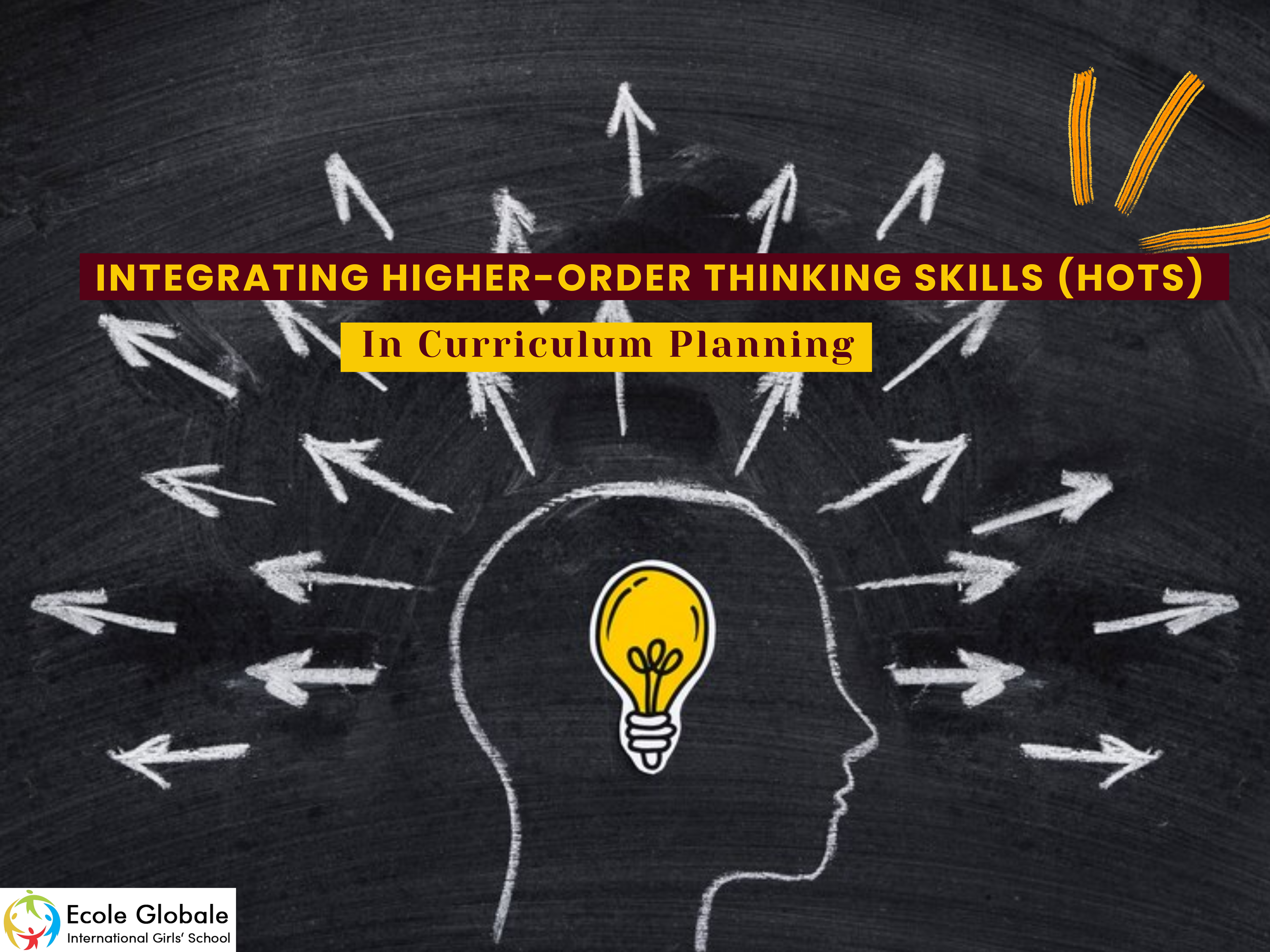In today’s rapidly evolving education landscape, fostering higher-order thinking skills (HOTS) is essential for preparing students to thrive in the 21st century. HOTS encourages students to think critically, solve complex problems, and engage with material beyond rote memorization.
One effective way to integrate HOTS into the classroom is through the thematic integration approach, where various subjects are interconnected around a central theme. This article will explore how educators can design a curriculum that promotes HOTS and the benefits of using a thematic integration approach.
I. What Are Higher-Order Thinking Skills?

Higher-order thinking skills (HOTS) involve advanced cognitive processes that require students to go beyond recalling facts. They focus on critical analysis, evaluation, synthesis, and application of knowledge to new situations. These skills are rooted in Bloom’s taxonomy, where HOTS occupy the higher levels of cognitive engagement, including:
- Analysis: Breaking down information into parts to understand its structure.
- Synthesis: Combining different ideas to create something new.
- Evaluation: Judging the value of information or ideas based on criteria and evidence.
Importance of HOTS in 21st-Century Learning
The importance of HOTS cannot be overstated in the 21st century, where students need to navigate complex challenges. Fostering critical thinking, problem-solving, and decision-making prepares learners to tackle real-world problems and adapt to a fast-changing global economy.
II. Thematic Integration Approach

Definition of Thematic Integration
Thematic integration is an instructional strategy that organizes curriculum content around a central theme, allowing for a more cohesive and connected learning experience. This approach links different subjects (like science, history, and language arts) to a common theme, encouraging cross-disciplinary learning.
Benefits of Thematic Integration
Thematic integration has several advantages for both educators and students:
- Promotes deeper understanding of core concepts by showing how they relate across subjects.
- Encourages students to make connections between ideas, enhancing their higher-order thinking skills.
- Engages students with real-world problems and topics, making learning more relevant and meaningful.
Examples of Thematic Units
- Environmental Sustainability: Linking science (ecosystems), geography (climate change), and social studies (human impact on the environment).
- Social Justice: Connecting literature (novels on civil rights), history (civil rights movement), and art (protest art).
III. Planning a Thematic Unit

Creating a thematic unit requires careful planning to ensure students are developing the necessary skills and knowledge.
Step 1: Identifying Key Concepts and Skills
Begin by selecting a central theme and identifying the key concepts you want students to learn. Ensure these concepts encourage HOTS, such as critical thinking or problem-solving.
Step 2: Developing Essential Questions
Craft essential questions that guide inquiry and promote deeper thinking. These questions should require students to analyze and synthesize information. Example: “How can human actions impact ecosystems and what solutions can be developed to mitigate these effects?”
Step 3: Designing Learning Activities and Assessments
Plan activities that allow students to engage with the theme through hands-on, inquiry-based learning. Ensure that these activities challenge students to use higher-order thinking, such as creating solutions to problems or analyzing case studies.
IV. Integrating Higher-Order Thinking Skills

To effectively integrate HOTS into thematic units, educators need to employ strategies that challenge students beyond surface-level learning.
Strategies for Incorporating HOTS
- Problem-Based Learning (PBL): Present students with real-world problems that they must solve collaboratively.
- Case Studies: Use detailed, real-life scenarios that require students to analyze, evaluate, and make judgments.
- Debates and Discussions: Encourage students to evaluate different perspectives and develop reasoned arguments.
Examples of HOTS-Based Lesson Plans
- Project on Climate Change Solutions: Students research, design, and present solutions to local environmental issues.
- Historical Analysis of Civil Rights Movements: Students analyze different strategies used in historical movements and evaluate their effectiveness.
V. Assessment and Evaluation

Assessing students’ development of HOTS requires moving beyond traditional tests. Instead, educators should use authentic assessments that align with the learning objectives of thematic units.
Aligning Assessments with HOTS Objectives
Assessments should evaluate not just what students know, but how they apply, analyze, and synthesize information. This might include:
- Rubric-Based Projects: Projects that assess students on criteria like creativity, problem-solving, and critical thinking.
- Reflective Essays: Students write about their learning process, showing their ability to evaluate and synthesize ideas.
Using Rubrics and Self-Assessment Strategies
Rubrics that clearly outline expectations for HOTS are essential. Self-assessment allows students to reflect on their learning, which further reinforces higher-order thinking.
VI. Implementation and Challenges
While integrating HOTS and thematic units is rewarding, educators may face challenges.
Overcoming Common Challenges
- Time Constraints: Planning thematic units and HOTS-based activities takes time. Collaboration among educators and gradual implementation can help manage time.
- Resource Limitations: Educators may lack resources to develop thematic units. Accessing open educational resources (OER) and collaborating with colleagues can provide solutions.
Tips for Successful Implementation
- Start Small: Begin by incorporating one thematic unit or HOTS activity at a time.
- Professional Development: Engage in workshops or online courses that focus on thematic integration and HOTS.
VII. Conclusion
Integrating Higher-Order Thinking Skills (HOTS) into curriculum planning through thematic integration not only enhances student engagement but also prepares them for the complex world of tomorrow. By carefully designing thematic units that encourage critical thinking, analysis, and problem-solving, educators can create meaningful learning experiences that resonate with students.









